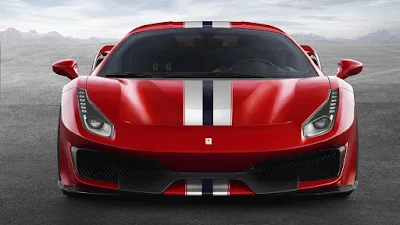Hagerty may be best known as a classic vehicle insurer, but they also do analysis to provide insight to future car collectors. The latest study done by their Automotive Intelligence Team shows that what supercar depreciation is like, and which supercar brands lose their value.
For this study, Hagerty specialists compare them based on depreciation rates because they suspect most owners would probably be more concerned about the collectability of their supercar rather than its outright performance.
Using data gathered from the U.K. and U.S. markets, Hagerty has chosen the following brands in its study: Aston Martin, Audi, Bentley, Ferrari, Lamborghini, McLaren, Mercedes-Benz, and Porsche. They also split the study into two categories—one that covers flagship models (requiring 12 cylinders or at least 700 horsepower), and one that covers lower-level cars (8 to 10 cylinders or at least 500 horsepower).
Hagerty found that all these cars depreciate. Typically, about 6 percent after one year, and 20 percent after three years. No amount of power, technology, or “specialness” can help a performance car completely escape the gravity that pulls down the values.
However, there are differences, depending on the circumstances of their launch and, it seems, where they come from. In terms of the launch of a new supercar, the hype that accompanies the introduction of these cars seems to be a double-edged sword. In some cases, it might create more initial demand than the factory is willing to meet, causing a blip of appreciation. For instance, the Ferrari 488 Pista Coupe was typically worth 6 percent more a year after it launched as enthusiasts tried to jump the queue. But by year three it, too, had fallen in value. The Pista falls by around 7 percent; at the opposite end of the scale, the Porsche 911 GT2 RS has dropped by 30 per cent since launch.
Some cars with prominent launches depreciated more after the first year because they were purchased new at unsustainably expensive prices, perhaps driven by dealer markups and speculative buyers prepared to pay over the odds to jump the line. The recent Porsche 911 GT2 RS saw an average of a 12 percent decline in the first year, likely because of buyers who paid over list price – the manufacturer’s recommended retail price – and sold soon after.
Geography matters, too. The Italians, Ferrari, and Lamborghini, tend to depreciate less in three years than the Germans. Britain’s Aston Martin and McLaren depreciated by anywhere from a fifth to a quarter.
Porsche 911 GT3s (plotted as one model but calculated as separate GT3 and GT3 RS versions) show a bit more depreciation than the Turbo coupes, seemingly due to increased speculation. The Lamborghini Huracán depreciates more modestly than its cousin, the Audi R8 5.2 V10. Generally, the convertible versions of the cars in the accessible set depreciate less than their coupe counterparts, except for the Mercedes-Benz AMG GT and Porsche 911 Turbo.
Hagerty concluded that this initial depreciation doesn’t mean these cars won’t be collectable in the long term, and there’s nothing here to say that tomorrow’s enthusiasts won’t lust after a contemporary McLaren. However, for those who buy these cars new and move on shortly after to the next big thing, there are clear disparities to consider. And to those who pick them up hoping to make a quick buck: look elsewhere.





No comments:
Post a Comment
Feel free to comment or share your views. Comments that are derogatory and/or spam will not be tolerated. We reserve the right to moderate and/or remove comments.